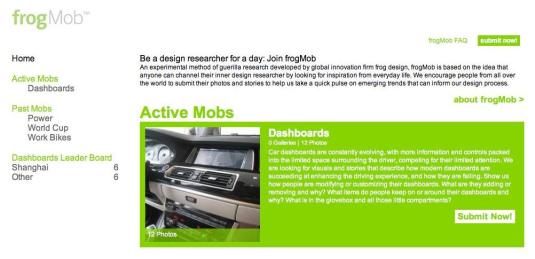
September 1, 2010
Design Giants Turn to the Crowd
Managing crowds isn’t easy anywhere, least of all in the anarchic world of the Internet. Yet, ever since Jeff Howe first coined the word in Wired magazine, we’ve instinctively known that “crowdsourcing” would someday be the next big thing in design. The only problem was figuring out how. As Tropicana and Johnson & Johnson found […]
Managing crowds isn’t easy anywhere, least of all in the anarchic world of the Internet. Yet, ever since Jeff Howe first coined the word in Wired magazine, we’ve instinctively known that “crowdsourcing” would someday be the next big thing in design. The only problem was figuring out how. As Tropicana and Johnson & Johnson found out last year, crowds are very good at expressing dissatisfaction with bad design. But can their insights be harnessed to actually produce good design? Last month, three mega design consultancies decided it was time to find out.
The least daring of them all is Continuum’s Open for Branding project. The Design Museum, Boston, is an unconventional client, to say the least – the nomadic museum has no permanent building and no real ‘collection.’ When they approached Continuum for re-branding, the project begged for an unconventional approach. The design firm decided to open the process up to the general public, using the Core77 blog. Every week, it posts progress on the project, and elicits feedback from the blog’s design-savvy readers. Four weeks into the project, the response has been pretty lukewarm, judging by the number of comments. This was to be expected – Continuum has retained all creative control, and people probably know a glorified focus group when they see one.

frog design’s frogMob puts the crowd at the other end of the design process – it asks you to “be a design researcher for a day.” The nature of the actual project, or its goals, aren’t disclosed. The site just asks a very specific set of research questions, and participants are expected to respond by uploading images, with tags and a description. Last week’s topic was Power, and frog collected 344 images, which were sorted into 15 galleries, with a tag cloud. This, apparently, is all that the site means by “synthesis.” Not exactly groundbreaking. But the image galleries are fascinating in themselves, and going by the quality of the images, the uploaders definitely know what they are about. Which makes it all the more unfortunate that we have no closure, no idea of how this collection of images affects the final designed outcome.
As you can see from the cute little introductory video above, OpenIDEO is a far more comprehensive crowdsourcing experiment. Participants essentially run the entire process, which is how it should be in the age of social networking. And they receive recognition for the work they put in — a design quotient rating that they can show off to other participants. The last design challenge, set by chef Jamie Oliver, was “How can we raise kids’ awareness of the benefits of fresh food so they can make better choices?” The project is currently about midway through the concept phase, but OpenIDEO users have already generated 81 concepts, including a hungry doll, a flying orchard, several games, and a fashion collection.
While that challenge continues to the evaluation phase, this week’s clients are even bigger fish. Sony and WWF have jointly asked OpenIDEO users to find ways to employ existing Sony technology sustainably. That’s one to keep an eye on: it is a more defined brief than the food challenge, and may even have an immediately actionable outcome.
The three experiments are each valuable in their own way, mapping the first steps in what is essentially unchartered territory for design consultancies. By mid-October, we should be able to better evaluate the progress of all three projects, and have a clearer idea of where crowdsourced design works best – in research, in evaluation, or in generating concepts. In the meantime, decide how involved you want to get, pick a project, and dive right in!





